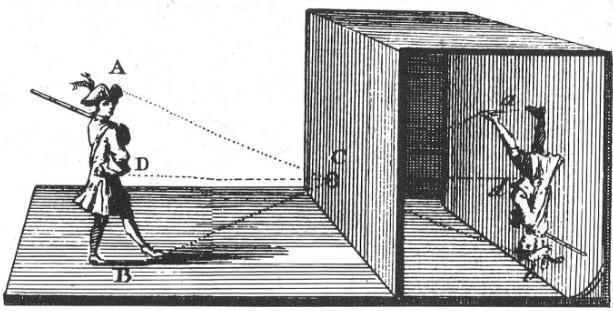2017年SAT终章|12月2号考情回顾
12月2日SAT终于落下帷幕,不管结果如何,辛苦了一年的考生终于可以暂时和标化说声再见。作为一路陪伴大家走过风雨备考路的小编,这时候只想对疲惫的你说一声:辛苦了。此刻你可能在宾馆里补觉,可能在香港街角的小店里徘徊,也可能已经踏上了回家了,不管你此刻心情如何,只希望你能有短暂的平静,给自己一些时间平静一下内心,准备迎接未来更多的波澜。
TD还是在时间组织了人力,试着还原今天的考情,以为大家提供一个参考。本次考试中TD首席教研员阿满老师、Emily老师及王力老师亲自参加SAT考试,从为大家返回前线战况。
阅读部分
文学作品节选自Maya’s notebook, 是智利女作家Isabel Allende写于2011年的小说。此次节选的段落主要描述了Maya的爷爷(popo)奶奶如何相遇的故事。理科宅男天才+日常生活白痴的爷爷深受非洲祖先部落占星学的影响,决意探寻失落之星。他来到智利,想要利用当地良好的地理位置和气候条件观星。在此遇到了开滴滴专车陪同的奶奶,一段浪漫就此萌芽。在天然呆的爷爷还懵懂无知的时候,坚定自信的奶奶早已一眼看穿天文学死宅的本质。
篇小说
小说题考文章不同两处的illusive的作用(6和64行),答案应该是draw a parallel...
考了有四道没有行号的细节题:
第三题问作者认为男主人公如何。文章提到关键词eminence(杰出),所以对应选项的academic accomplishment。其他干扰选项包括challengelonglasting theory都比较离谱。
第四题问到关于M theory的问题,应该选shepherd care for flock)
第五题问到为什么要去智利,文章说智利天空清晰且能看到一些南半球的星系。所以答案是optimal circumstances for observation。
小说中的循证还考了一道文章说happen in novel ,选项是not happen in real world。只要找到这块是文章和选项对应就没问题。
最后一题问女孩比男孩更怎么样,答案应该是assured and decisive。
历史篇章则节选自John Rushkin的the stones of venice,在发表于1851到1853年的这本建筑学著作中,CB节选了讨论工业革命之后,大规模工业生产dehumanize了工人,人沦落为工具,创意沦为标准化精确生产。而作者希望抑制这种趋势,大家更多的去购买有创意有艺术性的作品。
You must either make a tool of the creature, or a man of him. You cannot make both.Men were not intended to work with the accuracy of tools, to be precise andperfect in all their actions. If you will have that precision out of them, andmake their fingers measure degrees like cogwheels, and their arms strike curveslike compasses, you must unhumanize them. All the energy of their spirits mustbe given to make cogs and compasses of themselves....
第二篇历史
题是一个主旨题。对应选项应该是dehumanized workers 那个选项。
中间有一题问Why does the author mention manufacturing city, 应该选 the city place more products than human。
其中还有一道循证题问作者对于mass production的看法。看法就是efficiently produce useful products,证据在转折句前半句。
词汇题:end选goal,broad选general
带图的科学类文章节选自Ed Young的Moth remembers what they learn as caterpillars。开头提到的研究主题是毛毛虫的记忆在成年期可能依旧存在。乔治敦大学的Douglas Blackiston对此进行了一项新研究,训练毛毛虫避开乙酸乙酯的味道。结论是77%的成年蛾子依然记得去避开乙酸乙酯的气味。之后研究者排除了两种其他可能的解释,确信的确是毛毛虫时期的神经系统会保留到成年,而且毛毛虫需要在结茧之前的最后一个阶段受训才会记得。后面两段描述了毛毛虫记忆的生物原理。文章最后一段解释了保持这种记忆的用途。
The transformation from caterpillar to butterfly or moth is one of the mostbeguiling in the animal world. Both larva and adult are just stages in the lifeof a single animal, but are nonetheless completely separated in appearance,habitat and behaviour. The imagery associated with such change is inescapablybeautiful, and as entrancing to a poet as it is to a biologist.
Accordingto popular belief, within the pupa, the caterpillar’s body is completely overhauled,broken down into a form of soup and rebuilt into a winged adult.
RichardBuckmister Fuller once said that “there is nothing in a caterpillar that tellsyou it’s going to be a butterfly.” Indeed, as the butterfly or moth quiteliterally flies off into a new world, it is tempting to think that there is noconnection between its new life and its old existence as an eatingmachine.
Butnot so. A new study has provided strong evidence that the larval and adultstages are not as disparate as they might seem. Adult tobacco hookworms –a species of moth – can remember things that it learned as a caterpillar, whichmeans that despite the dramatic nature of metamorphosis, some elements of theyoung insect’s nervous system remain intact through the process.
Usingsome mild electric shocks, Douglas Blackiston fromGeorgetown University trained hookworm caterpillars (Manduca sexta) to avoid the scent of a simple organic chemical –ethyl acetate. The larvae were then placed in the bottom end of a Y-shapedtube, with the scent of ethyl acetate wafting down one arm and fresh air comingdown the other. Sure enough, 78% of the trained caterpillars inched down theodour-free arm.
Asthe caterpillar moulted their way through the larval stage, their aversion toethyl acetate remained. Blackiston allowed them to pupate and emerge asfull-grown moths, before testing them again, about a month after their initial‘electric’ education. Bear in mind that a tobacco hornworm lives for about 30to 50 days, so a month is very close to its entire lifespan.
Amazingly,77% of the adult moths also avoided the ethyl acetate-scented arm of theY-shaped tube and the vast majority of these were the adult versions of thesame larvae that had correctly learned the behaviour originally. Clearly, thelarvae had learned to avoid the chemical and that memory carried over intoadulthood.
Evenso, Blackiston was careful to rule out alternative explanations. For a start,ethyl acetate isn’t naturally foul-smelling. It’s actually rather reminiscentof pear drops and when larvae are exposed to it in the absence of electricshocks, neither they nor the adults they become learn to avoid it.
Anotherpossible explanation hinges on the fact that adults emerging from the pupausually experience a similar milieu of smells to their caterpillar selves.
Thischemical legacy’ could explain why adults and larvae react similarly to someodours. But when Blackiston applied ethyl acetate gel to the pupae of untrainedcaterpillars, the adults did not shrink away from the chemical. Nor did washingthe pupae of trained caterpillars, to get rid of any lingering traces of ethylacetate, have any effect.
Blackistonwas convinced that some aspect of the caterpillar’ nervous system was carriedover into adulthood. However, he also found that this only happened ifcaterpillars are trained at the last possible stage before they pupate – the‘fifth instar’. Any earlier, and the memories don’t stick.
Thefruitfly Drosophila suggestswhy this might happen. In its brain, memories of smells are located in mushroombodies, brain structures that consist of three lobes. The gamma lobe developsvery early while the alpha and beta lobes develop just before the pupal stage.
Blackistonthinks that long-lasting larval memories are writ into the alpha and betalobes, whose neural networks are kept around while the rest of the caterpillarbreaks down. If the larvae are too young, these areas haven’t developed yet andany learned information is stored in the gamma lobe and lost when itsconnections are trimmed back in the pupa.
Butwhy bother? After all, the entire advantage of metamorphosis rests on the verydifferent lifestyles and habitats of caterpillars and moths, which allow themto avoid competing with each other. Nonetheless, moths and butterflies muststill return to the right sort of plant in order to lay their eggs andBlackiston suggests that their larva-hood memories may help them to do so.
两道词汇题,aspect选part,Forms选kind,其他选项为style,component, method。
寻证题:毛毛虫对某个association的负面反应,证据在第四段。
细节题:在野外的毛毛虫对ethyl没反应
细节题:做这个研究的意义在于?答案为moth在做其他活动的时候也能应用这项技能。
两道图表题,两个图。五种设计:无刺激,只有气味,只有电击,在第三阶段电击,在第五阶段电击,个图是毛毛虫在五种设计中避开气味的比例,第二图是moth。图表题第二题是选majority的moth都可以记得气味刺激。
社科类文章
社科文章节选自Pam FrostGordor的Look, something shiny! How color images caninfluence consumers。文章开头就引入了俄亥俄州立大学的研究结论,当商品以彩色方式呈现,人们会注意到小的细节。而当商品以黑白呈现,人们才会关注其实用属性,包括成本和功能。后面具体描述了研究的设计和过程,以及对这种现象的解释。
COLUMBUS, Ohio—When it comes tobuying things, our brains can’t see the big, black-and-white forest for all thetiny, colorful trees.
That’s the conclusion of astudy at The Ohio State University, which found that people who were shownproduct images in color were more likely to focus on small product details—evensuperfluous ones—instead of practical concerns such as cost andfunctionality.
The findings, published in the Journal of Consumer Research, mesh well with notions of how vision evolved inthe brain, and suggest that viewing objects in black and white helps our brainsfocus on what’s most important.
“Color images help us noticedetails,” said Xiaoyan Deng, an author of the study andassistant professor of marketing at Ohio State. “Butblack-and-white images let us see the ‘big picture’ without getting bogged downby those details.”
The findings also suggest howmarketers can strategically use color—or its absence—to change how we feelabout a product.
“Marketers may take it forgranted that color is always the best presentation format for advertising,”Deng added. “This study shows that while color is desirable in most situations,it’s not desirable in all situations.”
If a product has broad featuresthat set it apart from the competition, then black-and-white images will helpcustomers cast aside minor details and focus on those key features, theresearchers found. If a product’s details are what set it apart, color imageswill make those details stand out.
In one part of the study, 94college students were asked to imagine that they were traveling to a remotecampsite where they could receive only one radio station. There, the campsitemanager offered two radios for rent: a basic analog radio for $10 a day, or afancy digital radio with many station preset buttons for $18 a day. Not onlywas the digital radio more expensive, but its preset buttons would be uselessat the campsite.
Students who saw pictures ofthe radios in black and white tended to make the practical choice—the analogradio. Only 25 percent chose the digital radio.
But among students who saw theradios in color, twice as many chose the digital radio. In that scenario, 50percent of students were willing to pay a higher price for a radio withfeatures that they could not use.
“Color drew their focus awayfrom the most important features to the less important features, and theirchoice shifted to the more expensive radio,” Deng said. “I think that’ssurprising—that just by manipulating whether the product presentation is incolor or black and white, we can affect people’s choice.”
Color also proved to be adistraction when study participants were asked to sort objects into groups. Theresearchers recruited people through Amazon Mechanical Turk, a service thatprovides online study participants.
The 287 participants were shownpictures of shoes and asked to sort them. Each grouping contained two types ofshoes that differed greatly in form and function, such as open-toe high heelsand rain boots. In that particular example, half of the high heels and theboots were a solid red color, and the other half were red with white polkadots.
When people viewed the shoes inblack and white, they sorted the high heels into one group and the rain bootsinto another 97 percent of the time. But when they saw the shoes in color, thatnumber dropped to 89 percent, with 11 percent sorting the solid-color highheels and boots into one group and the polka-dot heels and boots into another.
The polka dots were clearlyvisible in black and white, but they had more impact on participants’decision-making when they were seen in color.
Study co-author Kentaro Fujita, associate professor of psychology at Ohio State, has an idea why. It has to dowith the origin of our visual systems, and how our brains process night vision.
Of the light-sensitive rod and cone structures in the retina, it’s the cones that detectcolor and the rods that give us night vision, peripheral vision and motiondetection. Rods outnumber cones in the eye 20 to 1, and at night, when thecones don’t receive enough light to let us distinguish colors properly, we relyon the rods to see what’s happening around us—in black and white.
This would have been especiallytrue for early humans, who didn’t have sources of artificial light. At night,being able to tell the difference between objects by shape would have been keyto survival.
“Our visual systems evolved towork in both optimal and suboptimal conditions,” Fujita explained. “Optimalconditions might be during the day, when I want to distinguish a red apple froma not-so-red apple. The form of the object tells me it’s an apple, but I canfocus on the color because that’s what’s important to me. Suboptimal conditionsmight be at night, when I have to tell whether that object that’s moving towardme is my friend or a hungry lion. Then the form of the object is critical.”
He suspects that when our eyessee black-and-white images, our brains interpret them in ways similar to nightvision: We focus on form and function, and tend to ignore details.
开头考到作者用了哪种evidence,选experimental results 选项有previous studies。
细节:彩色和黑白会让人注意到differentcharacteristics。
寻证题:marketers一开始的假设是,答案是大家更喜欢彩色,证据是take it for granted那句话。
段落作用:中级几段是为了描述design&results ofthe experiment
词汇题:manipulating选control distinguish选perceive
两张图表:图一是在彩色中人们注意primary feature和secondary feature的比例。图二中黑白色。两张图的primary都比secondary高。两题是关于图表的。最后一题图表问到了这一点。
自然科学
自然科学双篇,篇节选自society of plant signaling and behavior的学术论文,认为植物可以学习和记忆。第二篇是MichaelPollan发表于纽约客的文章,标题是the intelligent plant。文章中提到了多位科学家对于植物神经的质疑。UCSC的科学家Taiz提到植物根本就没有真正的神经系统,可能都是化学或电流通路。耶鲁的Slaymen更为直白,认为相信所谓植物神经的都是疯子。
Many plant scientists have pushed back hard against the nascentfield, beginning with a tart, dismissive letter in response to the Brennermanifesto, signed by thirty-six prominent plant scientists (Alpi et al., in theliterature) and published in Trendsin Plant Science. “We begin by stating simply that there is no evidence forstructures such as neurons, synapses or a brain in plants,” the authors wrote.No such claim had actually been made—the manifesto had spoken only of“homologous” structures—but the use of the word “neurobiology” in the absenceof actual neurons was apparently more than many scientists could bear.
“Yes, plants have both short- and long-term electricalsignalling, and they use some neurotransmitter-like chemicals as chemicalsignals,” Lincoln Taiz, an emeritus professor of plant physiology at U.C. SantaCruz and one of the signers of the Alpi letter, told me. “But the mechanismsare quite different from those of true nervous systems.” Taiz says that thewritings of the plant neurobiologists suffer from “over-interpretation of data,teleology, anthropomorphizing, philosophizing, and wild speculations.” He isconfident that eventually the plant behaviors we can’t yet account for will beexplained by the action of chemical or electrical pathways, without recourse to“animism.” Clifford Slayman, a professor of cellular and molecular physiologyat Yale, who also signed the Alpi letter (and who helped discredit Tompkins andBird), was even more blunt. ” ‘Plant intelligence’ is a foolishdistraction, not a new paradigm,” he wrote in a recent e-mail. Slayman hasreferred to the Alpi letter as “the last serious confrontation between thescientific community and the nuthouse on these issues.” Scientists seldom usesuch language when talking about their colleagues to a journalist, but thisissue generates strong feelings, perhaps because it smudges the sharp lineseparating the animal kingdom from the plant kingdom. The controversy is lessabout the remarkable discoveries of recent plant science than about how tointerpret and name them: whether behaviors observed in plants which look verymuch like learning, memory, decision-making, and intelligence deserve to becalled by those terms or whether those words should be reserved exclusively forcreatures with brains.
词汇题:refined选precise
寻证题:第二篇作者认为科学家对植物神经的批评是,答案为somewhatmisleading because it misrepresent,证据在段后半部分。
交叉题:Taiz如何评价篇某几行,答案是认为这些可以由化学和电子方向解释不是植物神经。
交叉题:第二篇科学家如何评价篇,选unscientific
语法部分
语法部分难度适中。
篇文章讲socialnetworking site被用来雇佣员工,效果非常好,招募到理想人才,跟潜在的合适员工建立联系。考题比较基础。
第二篇的内容关于一个人致力于提高African American history 在学校教育中的重要性,开办了一些活动,逐渐受到了越来越多人的支持,并且产生了持续的后续积极影响。
第三篇关于一种能量很强的射线,不同于其他普通射线,这里考了句间关系词on the other hand 。该篇目中也考了词汇accomplice, ally conspirator。图表题考到了日本的信息,表格中有两条信息都关于日本,数据不一样,根据下文能确定是231,要细心。
第四篇的主要内容是Vemeer的画作非常真实,以至于让两本书的两个作者怀疑是否用了aid,这里除了所有格题。然后有个人就去探究到底用了什么方法,按照研究顺序一步步确定了V使用的方法是camera obscura,类似于小孔成像,文章中具体介绍了这种方法的使用。

该篇有词汇题acquainted with, familiarize with,pore。基础语法考点覆盖了平行结构,主谓一致,名词单复数,所有格,标点符号中的逗号和破折号用法。
文法部分耗时相对多一些,尤其是增删信息题,两个删掉或者增加的理由要结合文章内容仔细看,理解了就不容易错。符合平时的做题套路。逻辑关系词,过渡句,总结题,合并句子也都在考查范围内。
写作
The Problem With Second - Hand Clothes
by Tansy E Hoskins
https://www.businessinsider.com/the-problem-with-second-hand-clothes-2013-11
Macklemore’s hugely popular anthem “Thrift Shop,” which has been viewed over 450 milliontimes on YouTube, is a cheeky tribute to the joys of shopping on the cheap,featuring mountains of second-hand coats, sweaters, jackets, jeans, jumpsuits,dresses, shoes and shirts.
Onthe surface, the recycling of used clothes, often charitably donated, means oldgarments don’t go to waste, while new owners get a bargain. It seems like a“win-win” situation that couldn’t be more ethically sound. And as the Christmasseason approaches, millions of Westerners will soon flock to charity shops todonate their second-hand clothes.
Buton closer inspection, the reselling of clothes is more complex than one mightthink, posing difficult questions for those hoping to do good by donating theirold clothes.
Contraryto its homespun image, the second-hand clothing industry is dominated by whatDr Andrew Brooks and Prof David Simon at the University of London have called“hidden professionalism.” The majority of donated clothing is sold tosecond-hand clothing merchants, who sort garments, then bundle them in balesfor resale, usually outside the country in which the clothing was originallydonated.
Onekey market is sub-Saharan Africa, where a third of all globally donated clothesare sold. In a paper entitled “Unravelling the Relationships betweenUsed-Clothing Imports and the Decline of African Clothing Industries,” Brooksand Simon quote a representative of UK-based anti-poverty organisation OxfamWastesaver, who states that 300 bales of second-hand clothing can be sold inAfrica for around £25,000 (about $40,000 at current exchange rates), whiletransport costs are just £2,000. Even taking into account the costs of thingslike collection and processing, these numbers suggest that the selling ofsecond-hand clothing can be a lucrative affair, especially as the clothingbeing sold has often been charitably donated for free. While exact figures arescarce, in 2009, used clothing exports from OECD countries were worth $1.9billion, according to the United Nations Commodity Trade Statistics Database.
Butit’s not just the “hidden professionalism” of the used clothing business — andthe resulting gap between costs and resale prices — that hurts markets likesub-Saharan Africa. The flood of castoffs collected via second-hand clothingschemes (along with the rise of cheap Chinese apparel imports) have also helpedto undermine Africa’s own fledgling textiles and clothing manufacturingindustry, says Cambridge economist Ha-Joon Chang.
Thesecond-hand clothing market has a negative impact in donor markets, as well.Consumers in the global North throw away vast quantities of clothing everyyear. In the UK, for example, people dump 1.4 million tonnes of clothing intolandfills, annually. To combat dumping, charities and local governments haveincreasingly instituted clothing recycling programmes. But, ultimately,recycling tackles the symptom not the cause — and gives consumers a false senseof security that the rate at which they are consuming and disposing of clothingis at all sustainable.
Thetruth is, “fast fashion” is a deeply unsustainable model. And by emphasisingrecycling rather than tackling the root cause of why people continue to buy anddispose of larger and larger quantities of lighter, thinner and less well-madeclothing, consumers are reassured that they can continue shopping as normal.
“There is now this notion that fashion is just acommodity, and that we are just consumers,” laments Dilys Williams, director ofthe Centre for Sustainable Fashion at the London College of Fashion. “Itdoesn’t do justice to us or to fashion. Fashion should be about cherishingclothes and creating an identity, [but today it's] based on constant adrenalinand the excitement of purchasing. There is no anticipation or dreaming. Nothinglasts or is looked after. We each have a mini-landfill in our closets.”
Butwhy stop and think when the charity shop or recycling bank is there to takecare of the mess?









